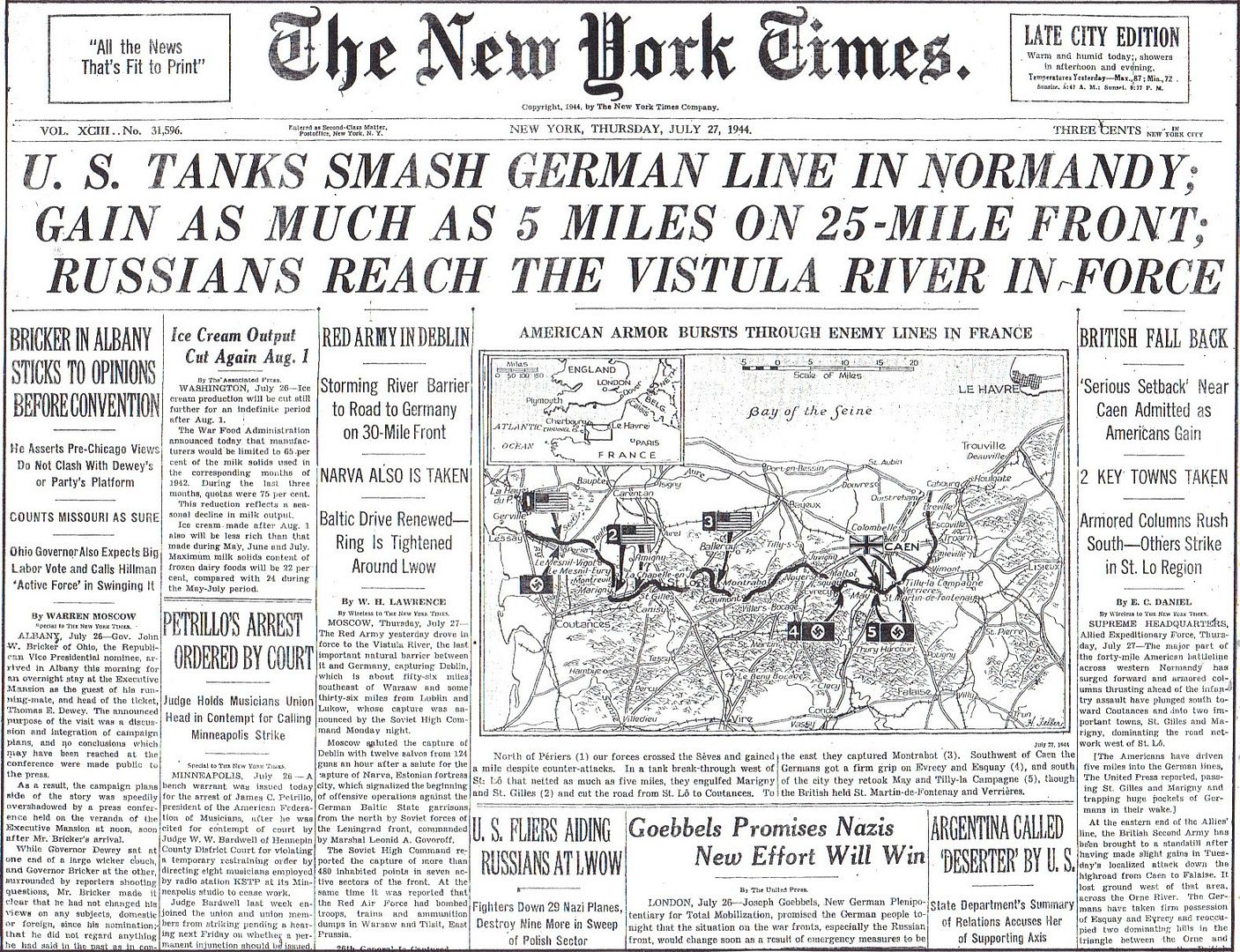
Posted on 07/27/2014 4:41:23 AM PDT by Homer_J_Simpson

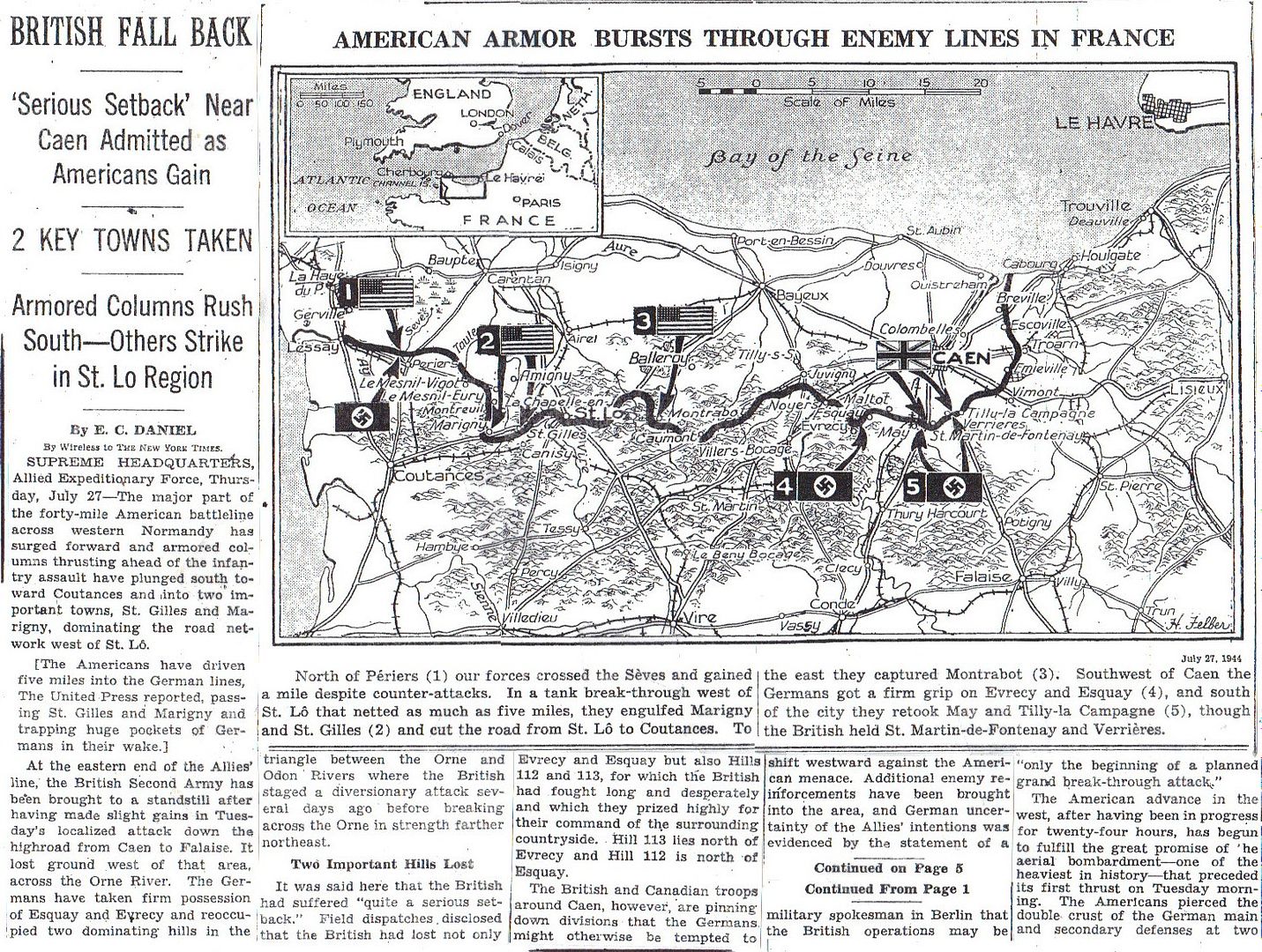
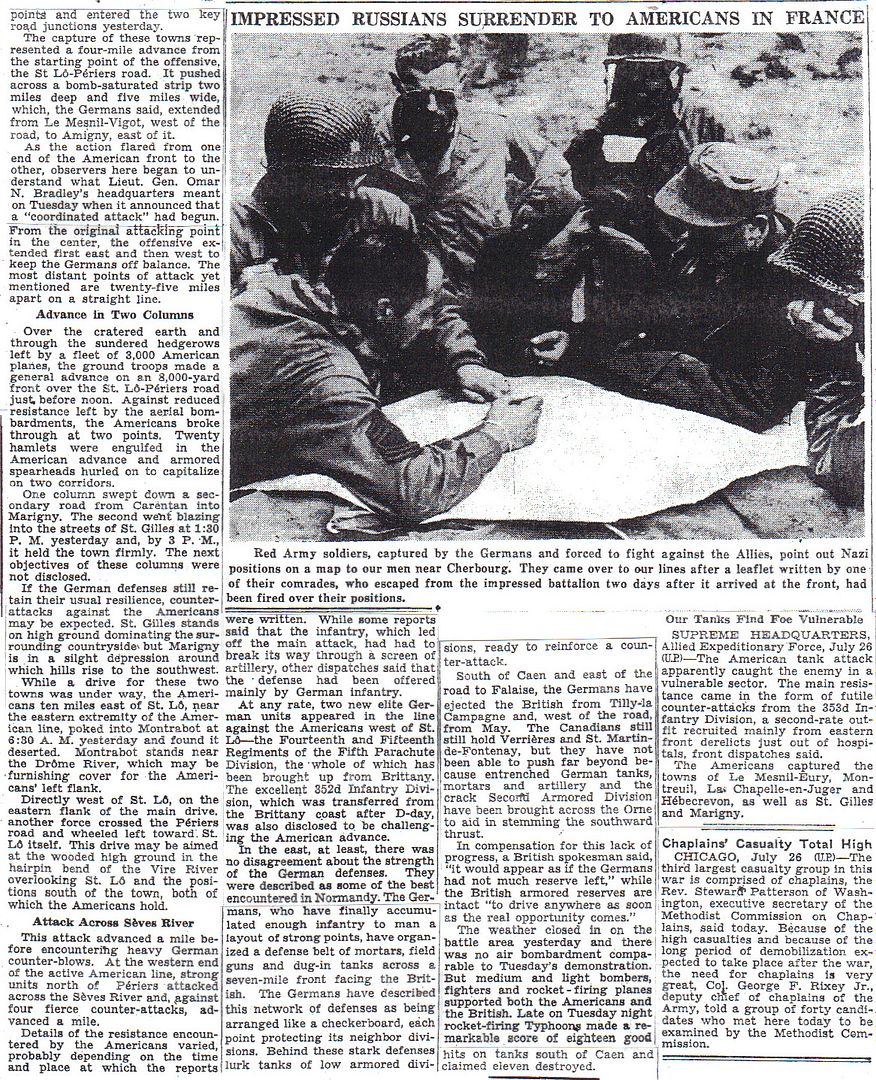
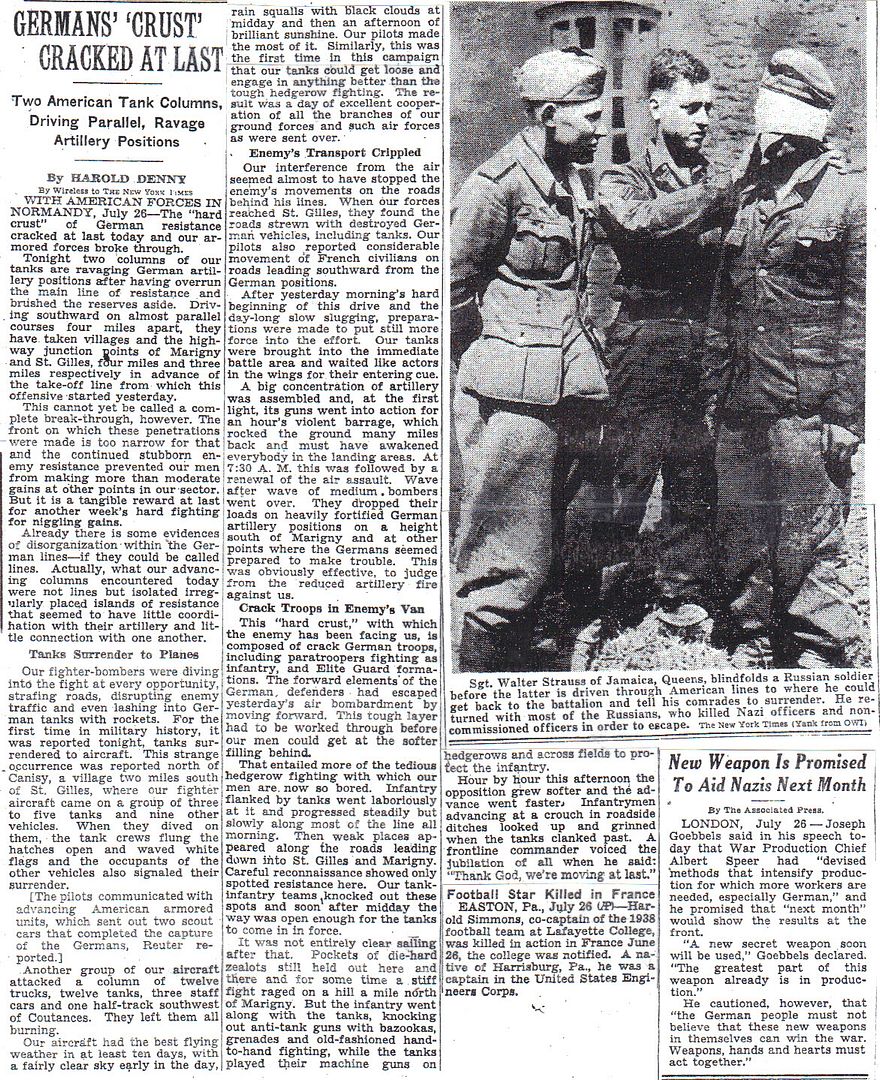

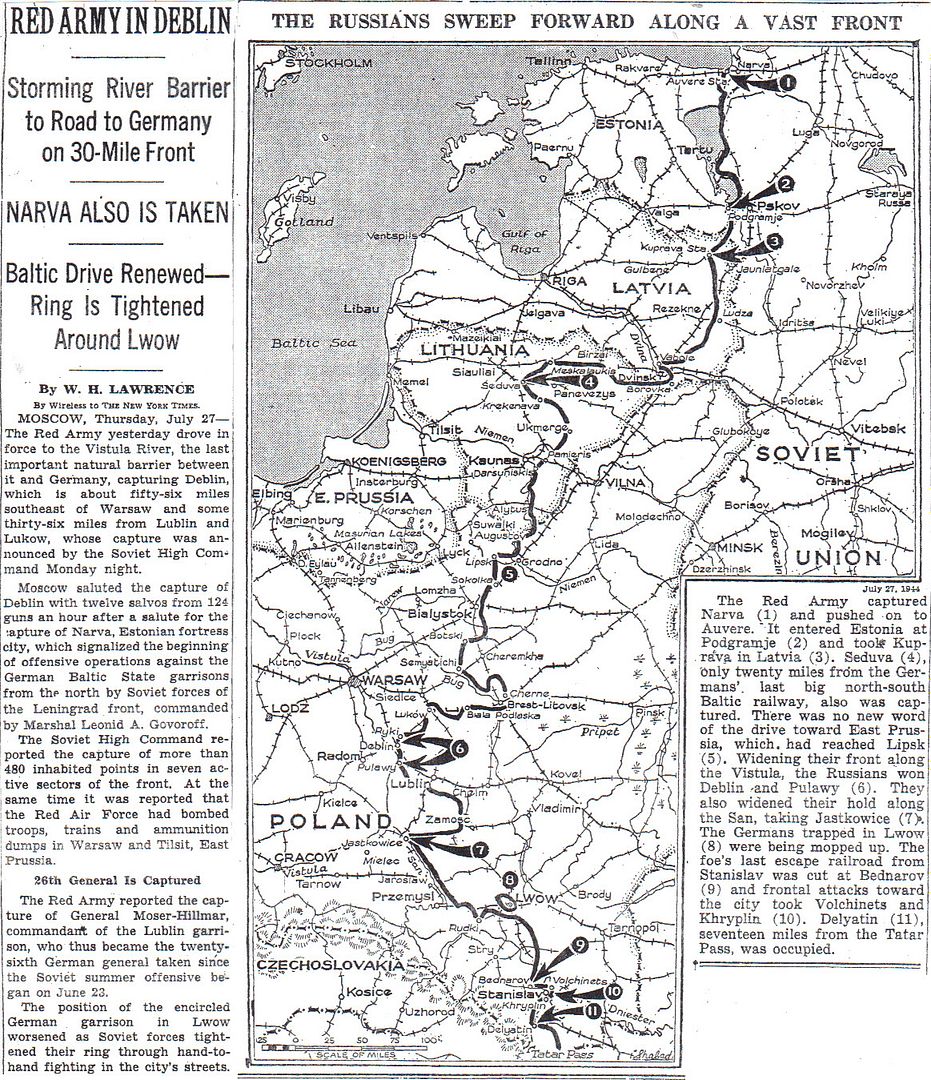
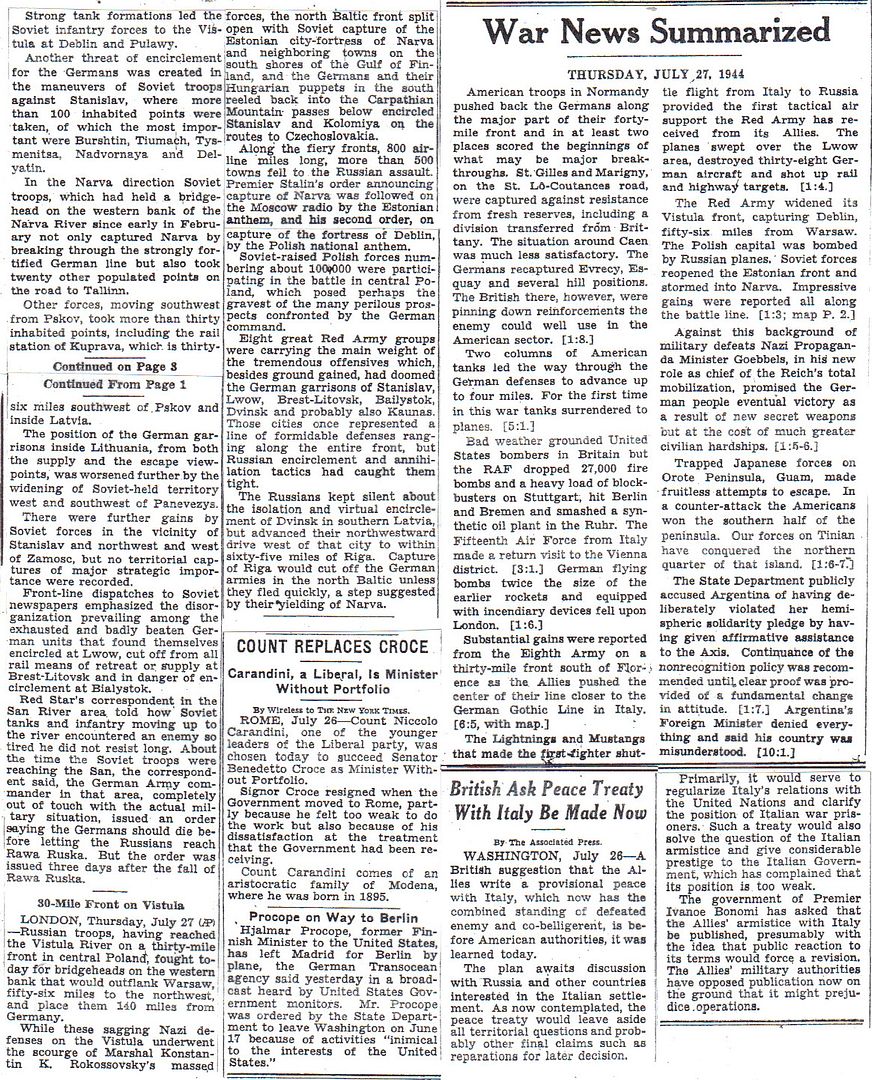
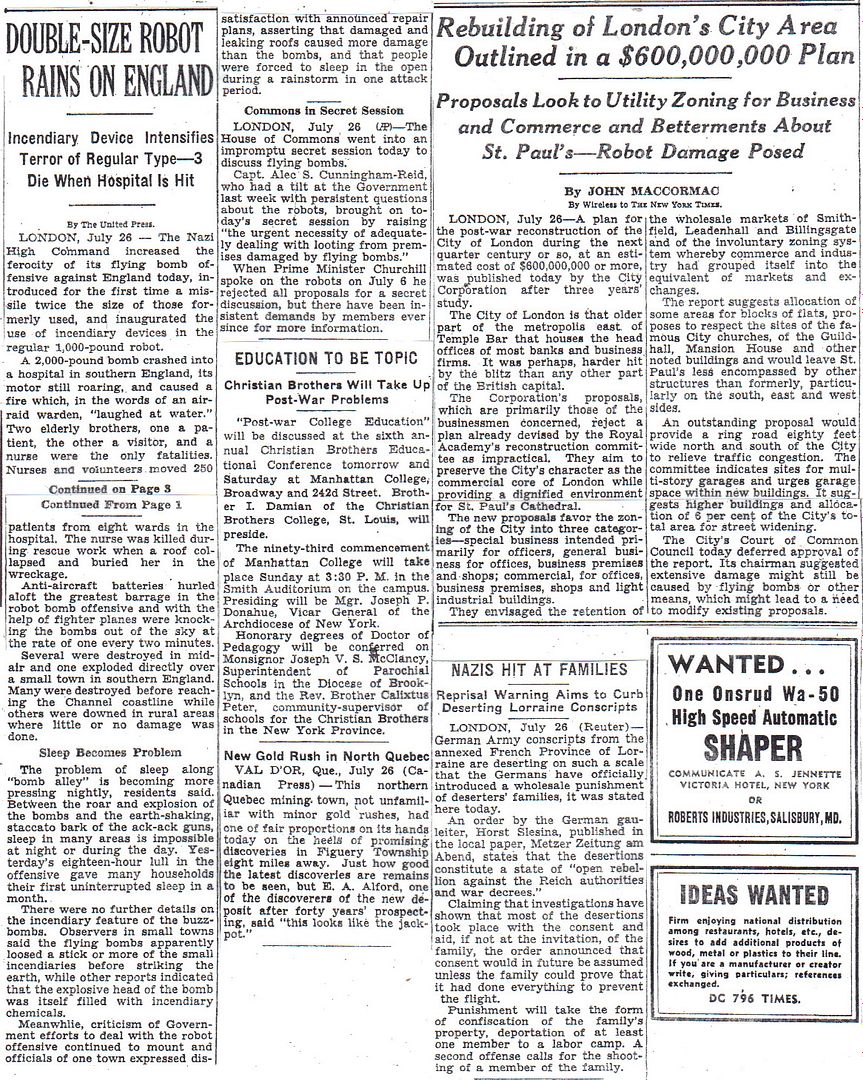
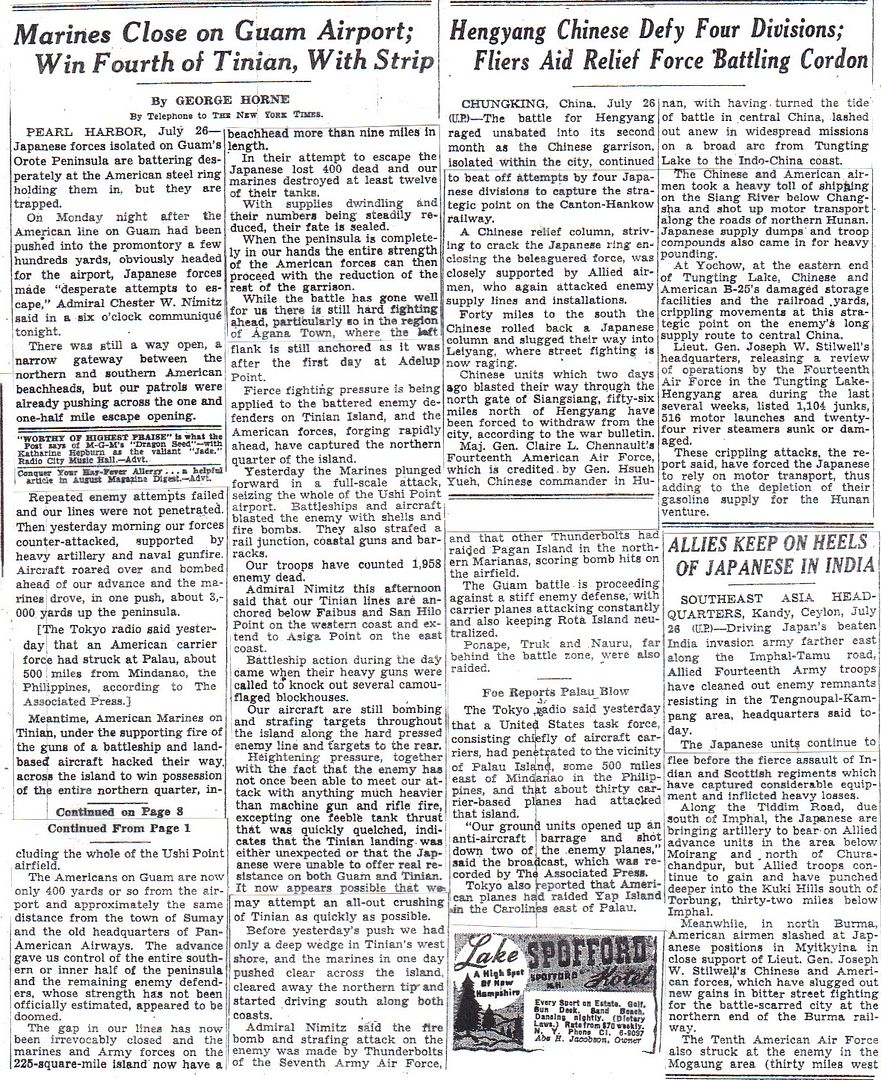

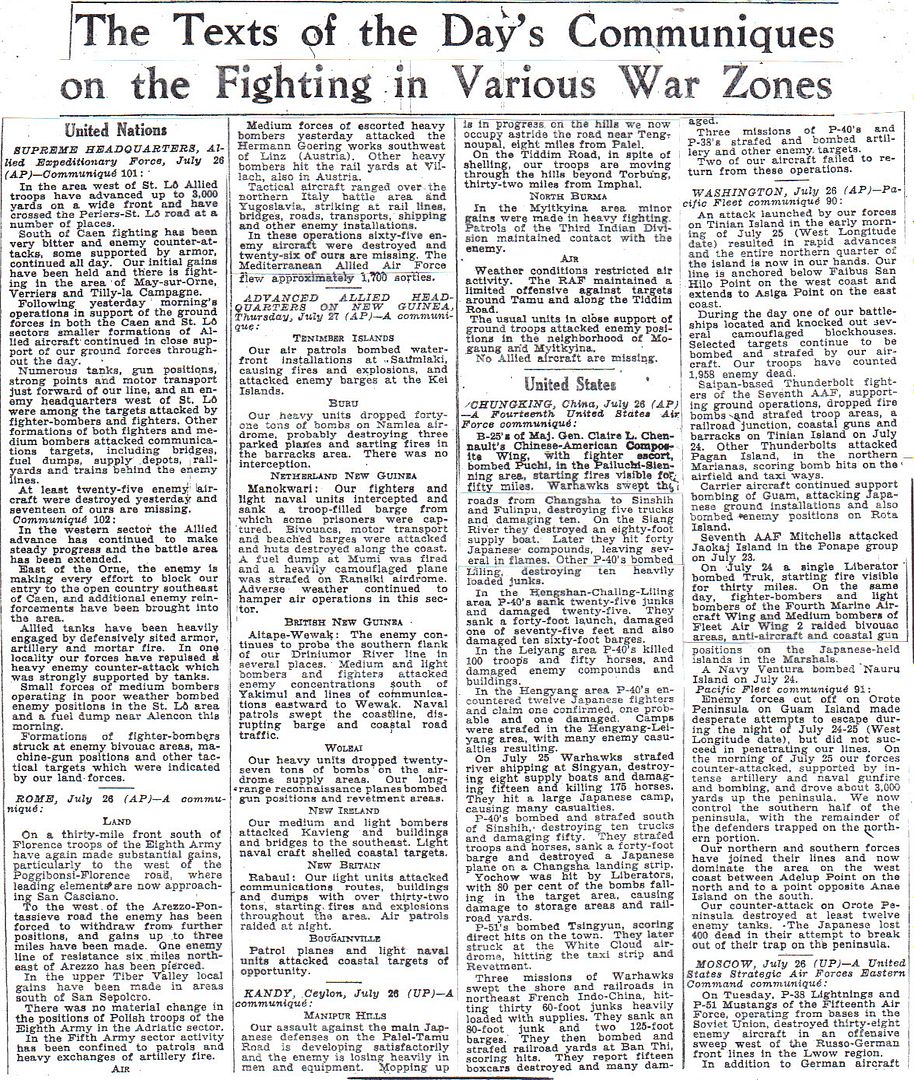
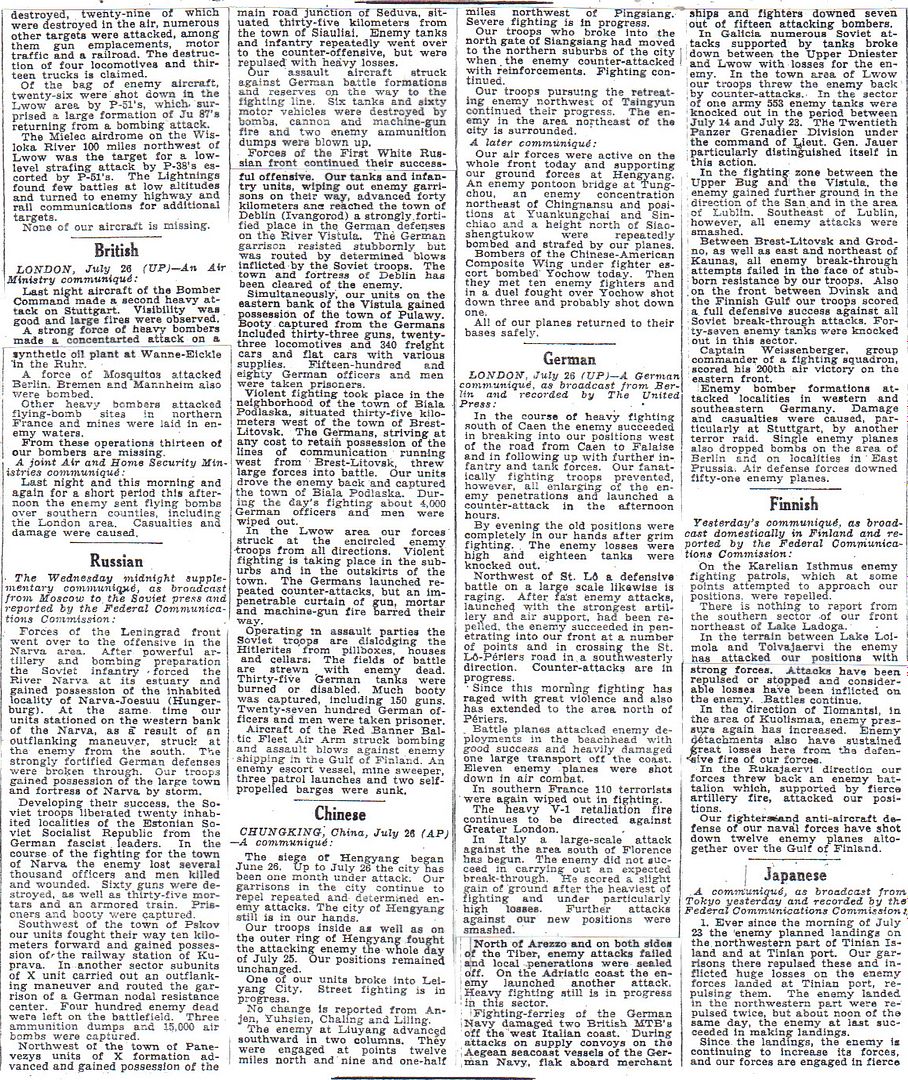

http://www.onwar.com/chrono/1944/jul44/27jul44.htm#
Soviets advance along the front
Thursday, July 27, 1944 www.onwar.com
Soviet T-34-85 crossing the Bug around Lvov [photo at link]
On the Eastern Front... Soviet forces advance. The 2nd Baltic (Yeremenko) captures Daugavpils in the north; 1st Baltic (Bagramyan) takes Siauliai; 2nd Belorussian (Zakharov) captures Bialystok; and 1st Ukrainian Front (Konev) takes Lvov and Stanislav 70 miles to the south.
On the Western Front... US 1st Army continues its offensive. The US 8th Corps breaks through between Lessy and Periers, capturing both towns.
In the Mariana Islands... On Guam, the US 77th Division prepares to attack Mount Tenjo. On Tinian, Americans being work on a new airfield at Ushi Point.
http://www.etherit.co.uk/month/thismonth/27.htm
July 27th, 1944 (THURSDAY)
UNITED KINGDOM: No. 616 Squadron RAF flies its first mission with the Gloster Meteor jet against V1s, but with little success at first owing to difficulties firing the guns. (Jack McKillop and 22)
The US Eighth Air Force in England flies three missions.
- Mission 498: 26 B-17s are dispatched to hit coastal batteries at Ostend and Cap Gris Nez/Calais area but weather prevents bombing. In Belgium, of 120 B-24s, 34 hit a Luftwaffe communication center at Brussels/Vilvorde, 20 hit a coastal battery at Gravelines, 11 hit oil installations and industrial plants at Ghent and 1 hits a target of opportunity without loss.
Escort is provided by 154 P-38s, P-47 Thunderbolts and P-51 Mustangs; 1 P-51 is lost.
- Mission 499: 193 P-38s, P-47s and P-51s fly fighter-bomber mission against rail traffic south of Rouen and Amiens; 2 P-38s and 1 P-51 are lost.
- Mission 500: 7 B-17s drop leaflets in the Netherlands and France during the night.
FRANCE: The US VII Corps breaks through between Lessay and Periers.
Lyon: Five prisoners of the Gestapo are shot dead after a Resistance bomb attack on a restaurant used by German officers.
HUNGARY: The US Fifteenth Air Force dispatches 366 B-17s and B-24s to bomb an armament works at Budapest; 24 other B-24s attack Pecs marshalling yards; P-38s and P-51s escort the Budapest mission.
EASTERN FRONT: The First Ukraine Front, under Konev, takes Lvov and Stanislav. The Second Belorussian Front, under Zakharov, captures Bialystock. The First Baltic Front, under Bargamyan, takes Siauliai. The Second Baltic Front, under Yeremenko, takes Daugavpils and Rezekne.
U.S.S.R.: Polar Fleet and White Sea Flotilla: (Sergey Anisimov)(69)Submarine loss. “V-1” (ex- “S-81 Sunfish”) - accidentally, by British aviation, off English coast.
ITALY: General Mark Clark presents the Distinguished Presidential Unit Citation to the 100th Infantry Battalion at Vada, Italy for action at Belvedere. (Gene Hanson)
GUAM: The US 77th Division is preparing an attack on Mount Tenjo.
TINIAN: US construction begins on the newly captured airfield at Ushi Point.
PACIFIC: Supporting the US invasions in the Mariana Islands, Seventh Air Force B-24s from the Marshall Islands bomb Truk Atoll.
In the Caroline Islands, USAAF Far East Air Force (FEAF) B-24s hit the airfield on Woleai Atoll and supply areas on Mariaon and Tagaulap Islands in the Caroline Islands. Carrier-based aircraft of the USN’s Task Groups 58.1 continue their attacks on Fais and Ngulu Islands and Sorol, Ulithi and Yap Atolls while aircraft of Task Groups 58.2 and 58.3 attack targets in the Palau Islands.
CANADA: HM S/M Unseen arrives Digby, Nova Scotia for ASW training.
U.S.A.: The 10-minute documentary “Battle Stations” is released in the U.S. Narrated by James Cagney and Ginger Rogers, this short describes the role of the U.S. Coast Guard’s SPARS and how they are freeing men for service overseas in World War II.
In the U.S., the top four pop songs today are (1) “I’ll Be Seeing You” by Tommy Dorsey and his Orchestra with vocal by Frank Sinatra; (2) “Swinging on a Star” by Bing Crosby which becomes the Number 1 song of the year; (3) “Amor” by Bing Crosby; and (4) “Straighten Up and Fly Right” by The (Nat) King Cole Trio.
If those surrendering Russians on p3 and p4 knew what was in store for them upon their return to Russia, they might have stood and fought to the end.
Without the caption, I never would have guessed the river crossing photo was in New Guinea.
"The Nazis sought not only to exterminate every last Jew in Europe, but also to erase most evidence that the Jews ever existed.
This photograph shows two Red Army soldiers inspecting a partially burned Torah scroll, a remnant of the culture the Third Reich sought to destroy.
The scroll was found when Soviet troops liberated the Majdanek death camp."
“Ice Cream Output Cut Again Aug. 1”
Oh, that’s just wrong.
We seem to have deforested Aitape pretty thoroughly.
It would be interesting to see the long-term ecological impact. With the soil exposed, erosion will change the river courses, among other effects.
That is an interesting question. I don't know if the barren landscape was due to chemical defoliants, flamethrowers/napalm, hard fighting, or mechanical clearing.
My understanding in general is that rain forest soil is quite poor due to high rates of leaching. If the topsoil was churned under due to hard fighting, some time may have been required for seeds to be deposited and begin sprouting.
In Stalingrad, my understanding is that Mamayev Kurgan remained a bald knob for several years after the battle.
Left to itself, the jungle would eventually reestablish itself, but the resulting terrain is likely quite different from the original.
Some ecosystems never recover, such as near-desert grasslands that are overgrazed and grow up in cactus and scrub. However, rainforest is pretty resilient, if things are left alone after the original clearance.
I suspect that photo might have been taken near the Aitape beachhead looking out to sea. I don’t think the limited amount of bombing and artillery fire unleashed on the north coast of New Guinea would much disturb the jungle. This is different than the central Pacific islands bombarded by battleships and certainly not comparable to the devastation around Stalingrad.
Oh, I see, having pulled up a map of New Guinea, that it is quite near the coast. That’s a different situation from inland terrain, particularly mountains.
Just speculating here but fire and overgrazing strike me as similar in effect. Might an arid grassland tend to remain an arid grassland with adequate rain?
No, fire burns off the grass tops and leaves ash in the soil, which is beneficial in the long term. Grazing, especially by sheep, gets down to the root systems and keeps the grass from coming back after a rain. Then the soil is open to hardier desert plants.
Disclaimer: Opinions posted on Free Republic are those of the individual posters and do not necessarily represent the opinion of Free Republic or its management. All materials posted herein are protected by copyright law and the exemption for fair use of copyrighted works.